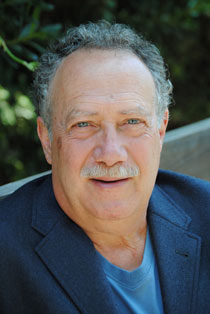 Meet Joel Kotkin, a guy who is reviled by smart growth advocates and new urbanists everywhere. Kotkin, an author and trend-watcher, is fond of dashing urban dreams with cold, hard numbers. Talk about the “triumph of the city,” and he’ll parade out a long line of Census figures that show that, sorry, the suburbs are still kicking demographic ass in this country.
Meet Joel Kotkin, a guy who is reviled by smart growth advocates and new urbanists everywhere. Kotkin, an author and trend-watcher, is fond of dashing urban dreams with cold, hard numbers. Talk about the “triumph of the city,” and he’ll parade out a long line of Census figures that show that, sorry, the suburbs are still kicking demographic ass in this country.
In a particularly shrill essay in The American in 2010, Kotkin declared, “For the first time in memory, the suburbs are under a conscious and sustained attack from Washington.” (Gad!) In a recent column in Forbes, he wrote that cities are so predictably Democratic as to be “essentially irrelevant to the Republican Party.” (Not so irrelevant that the GOP doesn’t go out of its way to suppress the urban vote, but I digress.)
Why on earth would I bother with a guy like this? Call it a tic. This is the latest in my occasional series of interviews with old white guys. (Former subjects include Witold Rybczynski and David Rothkopf.) This demographic churns out some of the crappiest ideas around. But every once in a while, one of these fellows surprises you.
Q. Why do you hate cities so much?
A. That’s just an absurd question. I can barely answer it. I grew up in New York and live in Los Angeles, so I do not exactly dislike cities. I dislike people who mischaracterize what’s going on about cities because they often miss the more important issues. And they also promote this idea that everything is inevitably going to go with us, so we don’t have to fix our basic problems.
I’m trying to tell the situation like it is. I think that there is this idealized version of what a city is. I tend to look at the Census and go from there.
Q. Do you live in L.A. proper, or in the ’burbs?
A. You might look at my neighborhood and say I live in a suburb. It has a suburban feel. Most people drive. Most people have single-family houses. Some of the lots are big and some are small. Well, I’m 10 minutes from downtown Hollywood. I’m 10 minutes from West Hollywood. So what is it? Is it a suburb or is it a city?
Urban life in America does not necessarily mean a high-density life. What makes many American cities attractive for some families and some of the middle class is that there are some similarities to what you get in suburbs — think of Staten Island, Queens, or the San Fernando Valley.
It’s one of the reasons we decided to stay here, to remodel our house. We love our neighborhood. It’s diverse, it’s near things, we can walk to a grocery store. It probably helps to speak Hebrew at that store, but Farsi will do. It’s tree-lined. We have hawks that nest in the backyard. But I live in the big city. I mean, my happiest weeks are when I’m home and I do 90 percent of what I do on a bicycle.
Q. Joel Kotkin rides a bike? I can’t believe this.
A. When I’m home I ride a bike five, six times a week. I have an old 1930s house, which is actually very efficient because it has giant trees around and it has only one story.
Q. What do you make of surveys suggesting that there’s a resurgence of interest in urban living, particularly among millennials and baby boomers?
A. In terms of boomers — we looked at people who were 45-54 in 2000 and tracked where they were a decade later. They were leaving core cities. They were leaving, a little bit, the suburbs, but if they were going anywhere, they were going further out. But the Census shows that most boomers aren’t going anywhere. They’re staying in their homes much longer than anyone thought.
The story about the empty nester who goes to the city — it happens. In a country of 306 million people, anything happens. But is it a huge trend? There is no evidence of that.
Q. Is this partly the result of the real estate crash? Even if boomers wanted to move to the city, they’d be hard pressed to sell the house in the ’burbs.
A. It wasn’t happening before [the crash] either. It’s a classic urban legend, and if you repeat it often enough it’s true. There are relatively few people living in Pasadena or La Quinta who are 60 and are going to give up the house they own outright to move into a dense downtown environment in urban Los Angeles.
When you get older — and I can tell you, unfortunately, because I’m going to be 60 next year — the things that the city offers, particularly if you are used to the suburbs or the countryside, are less vital to you. You may want to come for a weekend or a vacation, but do you really want the noise, the congestion. Are you really going to stay up until 3 in the morning hanging out in Manhattan? Probably not, in most cases.
Q. What about young people?
A. When I was the age that the older millennials are now, most of my friends lived in Manhattan. Now none of them do. So people grow up. As they get older, they tend to move out. When people have kids, they generally want a single-family house.
Q. So this is just a phase? Young people always want to live in the city, but they get over it?
A. Well not all young people, but a certain kind. I hate to tell you, but the same things were being said in the ’80s. If you look at the Koch years in New York, or if you ever saw the Woody Allen move Play it Again Sam, San Francisco all of a sudden became the young, hip place. But over time, many of these young people moved out.
The key issue is, cities need to hold onto a bigger percentage of young families. Otherwise they have a situation where they have to continually import families because there aren’t going to be enough kids brought up in L.A., New York, or Chicago for whom this is going to be home. Cities need to understand, why are these families leaving?
Q. What do you see as the key issues?
A. The big problem that cities have is, they’re becoming a place for the very rich and the very poor, the overeducated and the undereducated.
The second thing is the schools. The current L.A., New York, Chicago schools — even though there may be little points of improvement, they’re pretty awful. People I know who have kids in these schools either have to live in very wealthy neighborhoods that have good schools or they have to go to private schools.
The final part, which is ignored by many in the new urbanist movement, is you have to have an economic environment that creates jobs. What you see generally is the outflow of jobs to smaller cities and the suburbs. There was a brief period during the early part of the stimulus when you had a lot of government jobs that tended to go to inner cities, plus universities and hospitals are in cities, but the private sector economy tends to be elsewhere.
Q. What about improving urban transportation systems?
A. If you look at transportation, we’re slightly below where we were in 1980 in terms of how many people use mass transit. I think there are more flexible ways of getting to where you need to go, particularly telecommuting, which is growing much faster [than transit ridership], and is almost completely ignored in the new urbanist press, and almost completely ignored by environmentalists. Telecommuting is by far the killer app in terms of reducing our DMTs [daily miles traveled] — that, and improved car mileage.
The question is, how can we create an environment where people can work near where they live? How do we create a series of villages in the suburbs and exurbs and to strengthen urban neighborhoods? I’m very much in favor of localism, in terms of building things from the community level up. The way I look at it, every city has its own DNA.
Q. Hey, whoa, now you’re starting to sound like Jane Jacobs on me.
A. Look, different people are going to want different communities. How do we make those communities better? Any policy that says we’re going to force people to live in high density, and if they don’t like it they can either leave the state or they can try to buy the remaining single family homes at an inflated price — that’s what you end up with.
What people don’t understand is that when you do surveys, people in the suburbs generally know their neighbors more, they vote more, they’re more involved in their communities, because they’re generally homeowners. In my neighborhood, we know our neighbors and it’s very diverse — and a lot of people don’t want to give that up.
Q. You don’t buy the whole Bowling Alone argument?
A. His own data doesn’t show that. Urban centers are not more cohesive by their very nature. When people move to the city, either they’re immigrants before they get enough money to move to the suburbs, or they’re young people who are there for a period of time. There’s a higher proportion of renters who are less apt to be rooted than people who own property. The dynamic just isn’t there.
Q. What is your urban ideal?
A. If I have a favorite city in history it would be Amsterdam in the 17th century, which [Simon] Schama calls the “Republic of Children.” You’d have a business on the ground floor and the family would live upstairs, and all of the Rembrandts and amazing paintings of that time … Descartes called it “the inventory of the possible.” And that’s what cities should be — they shouldn’t be tied to somebody’s idea of what the right aesthetic form is, or some prescribed density.


